
Almanac is a travel companion app I designed to help inexperienced travelers explore the world with confidence. It provides essential country-specific information like visa requirements, local transportation, currency details, and safety tips while securely storing all your travel documents in one place.
Product Designer
7.5 Months
Figma
Procreate
Personal Project
This is the problem I set out to solve, but not the one I identified.
While solutioning, I envisioned a highly interactive itinerary-building experience—a 3D map where users could explore and discover attractions in a gamified way. Think Google Maps meets the Metaverse or Minecraft. The goal was to make trip planning feel immersive, visual, and fun.


While I initially focused on making itinerary building more immersive, my user interviews told a different story. Travelers weren’t looking for more visual flair or interaction—they were overwhelmed by fragmented tools and concerned about travel preparedness.
Juggling multiple apps, scouring Reddit threads, and relying on AI just to figure out basic travel logistics was chaotic. Some even missed critical visa or documentation requirements, costing them valuable time—and in some cases, money.
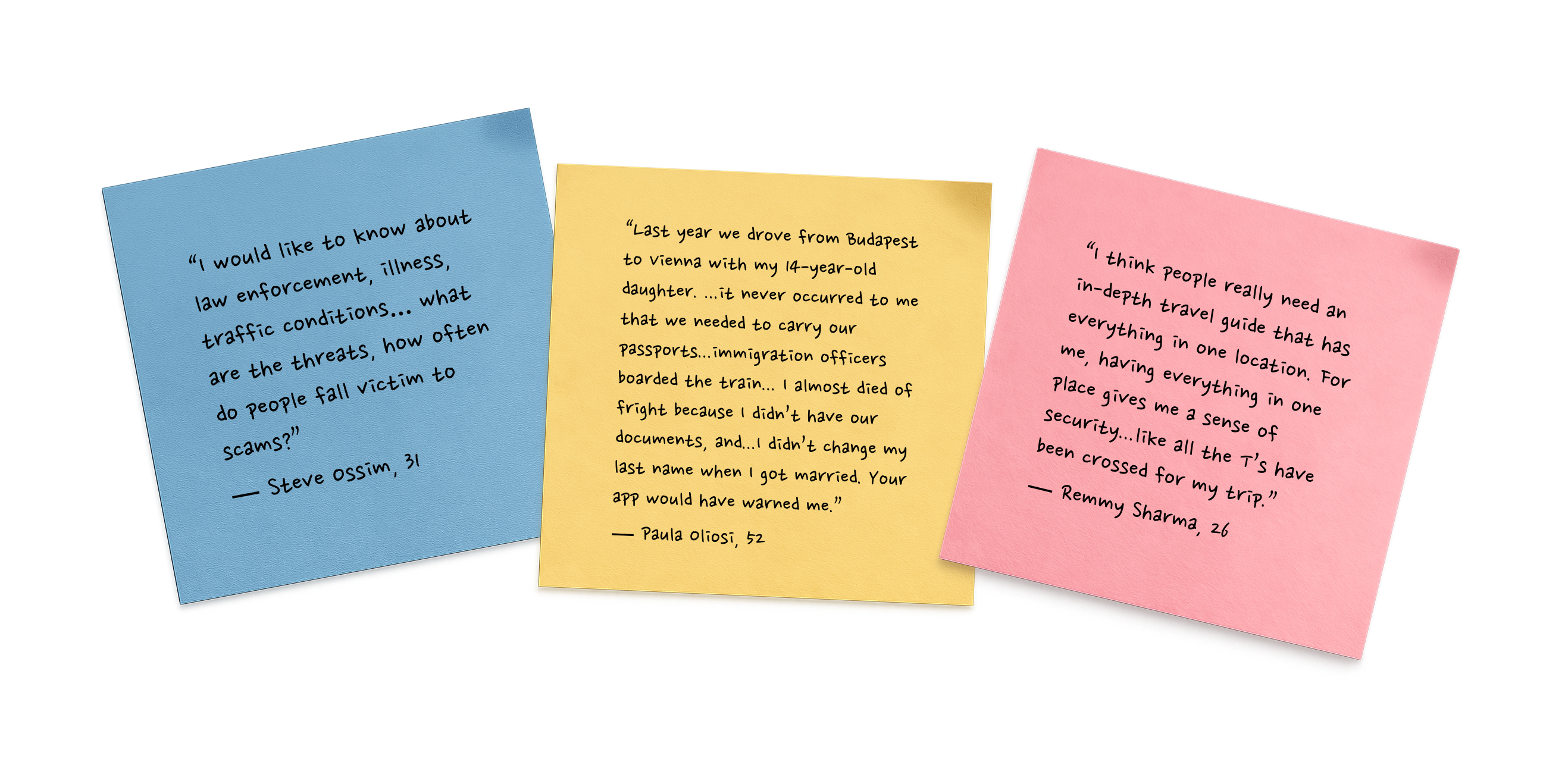
After speaking with several travelers, a clear pattern emerged: planning international trips felt overwhelming not because the tools weren’t engaging, but because they were scattered.
Travelers needed a single, trustworthy space where they could easily access visa requirements, travel documents, exchange rates, safety bulletins, and more.
To solve the problem of fragmented travel tools and scattered information, I designed Almanac—an all-in-one mobile app built specifically for novice and casual travelers.
Almanac consolidates essential travel resources into one intuitive platform, offering users up-to-date visa requirements, regional saftey bulletins, local transportation options, currency exchange rates, and secure document storage. Rather than switching between multiple apps or unreliable threads, users can rely on Almanac to plan smarter, feel more confident, and focus on what really matters: the journey itself.
To ensure Almanac met the needs of real travelers, I defined three core user types. Each represents a different level of travel confidence and planning needs—from first-timers to seasoned adventurers. These segments shaped key features, interface decisions, and onboarding flows.

These users are normally very young (17 to 25 y/o), single, and have little to no travel experience. They are eager to see the world but don’t know where to start. Almanac can give them the knowledge and confidence to explore the world outside of their home country.

Aged from around 25 to 31 y/o, this segment takes up the majority of the market. They are not necessarily well traveled but they have been abroad more than once. Almanac will provide the seamless and cohesive travel experience they may be lacking across the multitude of travel apps they utilize.

This type of user is extremely well traveled. They are usually older than 30 and know what they like and don’t like when traveling abroad. They already have systems and processes established but Almanac can still provide them with the value of having everything in one digital space.
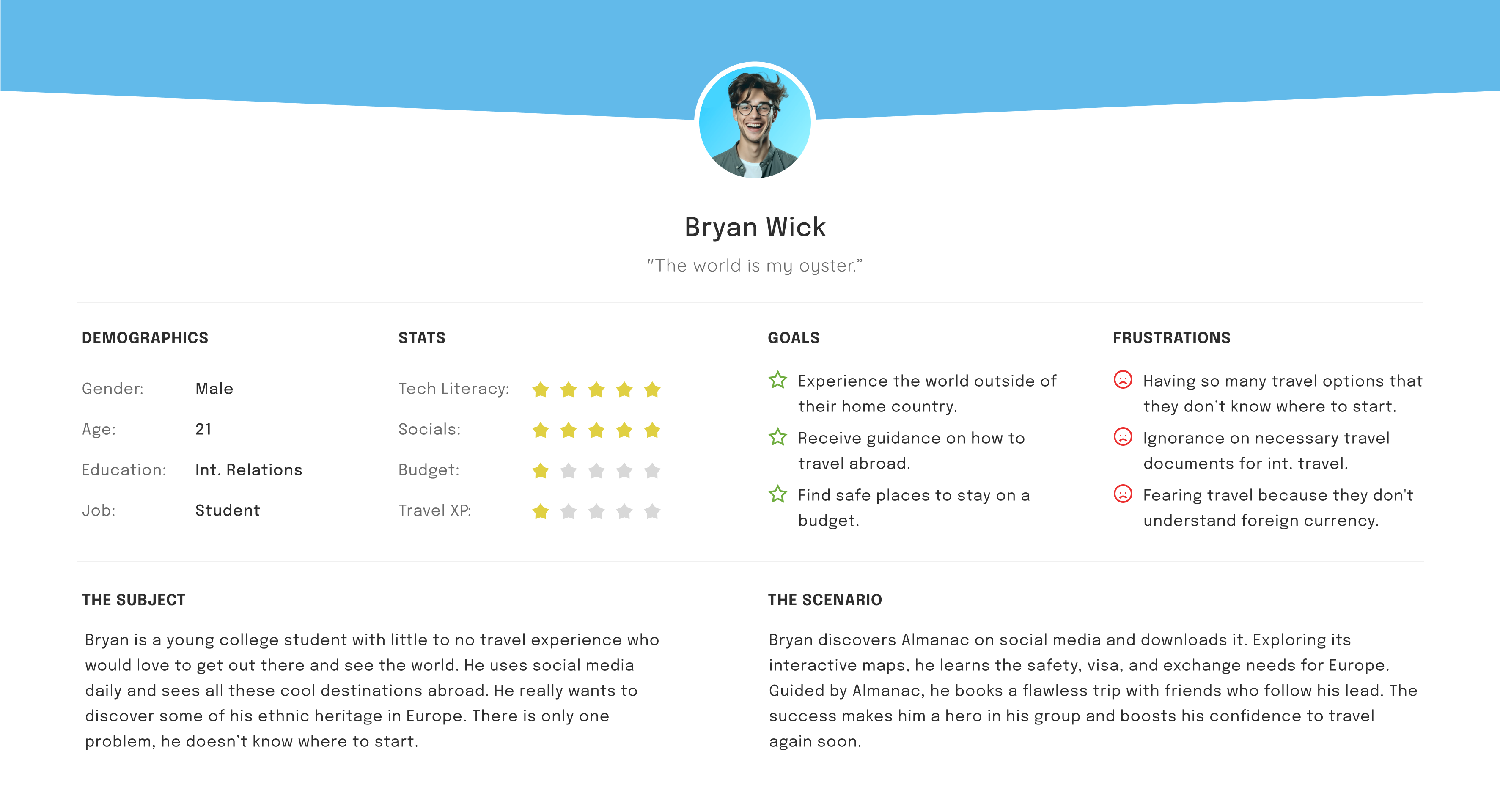

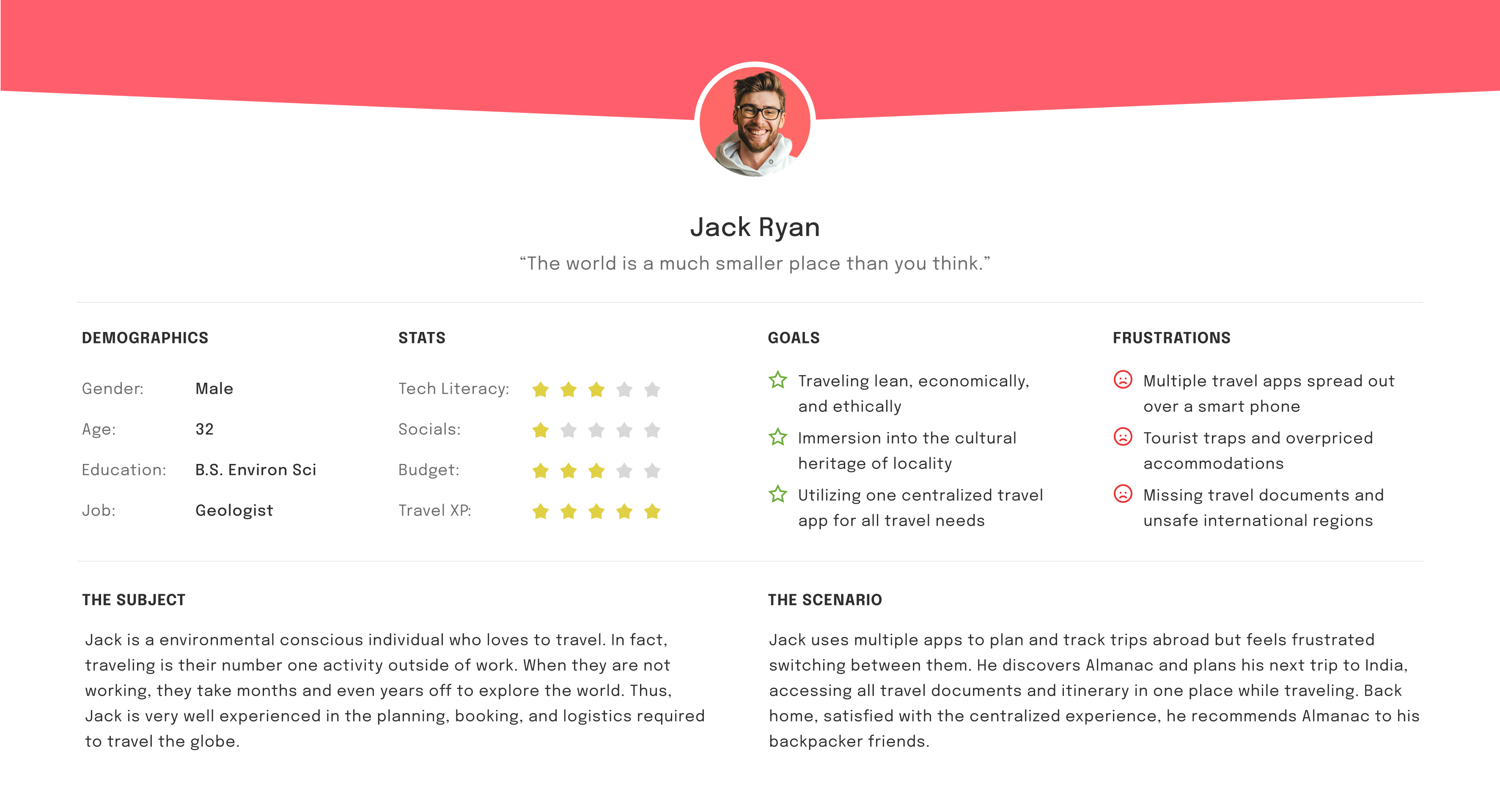


Bryan stumbles across an Almanac on his feed while looking a travel influencer reels. Inspired by its claim of providing novice travelers with guidance in travel planning, he downloads the application.

It is Bryan’s dream to travel to Europe but he is unsure what is needed to make that happen. While exploring Almanac’s interactive maps, he finds country travel requirements. He begins to understand the required budget, visa needs, and exchange rates to travel across Europe.

Almanac guides him through the steps and he successfully books a trip with his friends who follow his lead. The trip goes off without a hitch and Bryan is a hero among his friend group. This gives Bryan the confidence to travel again soon.
Before sketching out solutions, I studied well-established mobile design patterns used in leading apps like Google Maps, Airbnb, Robinhood, and Apple's HIGs. I analyzed how these platforms handled navigation, information hierarchy, onboarding, and feedback to ensure my design felt both familiar and intuitive.
By drawing on these proven patterns, I ensured Almanac felt familiar and intuitive, lowering the learning curve for new users while still offering unique value.
.jpg)
Sketching helped me quickly visualize and iterate on Almanac’s core features. Referencing familiar design patterns from my previous research, I identified key elements—like the profile and map view—that shaped the app’s structure early on.
These low-fidelity sketches helped me quickly test layout ideas, feature placements, and navigation patterns before moving into wireframes.

A detailed site map was required to outline the app’s core sections and how they relate to each other. This helped establish a clear, logical hierarchy for features like the dashboard, profile, and country pages. It also ensured that users could navigate the app effortlessly, with all essential tools just a few taps away.

The wireframing phase was where the product started taking shape. I mapped out every screen—focusing on hierarchy, navigation, and content density. Testing these wireframes helped validate assumptions and refine the user journey before investing in visual design.
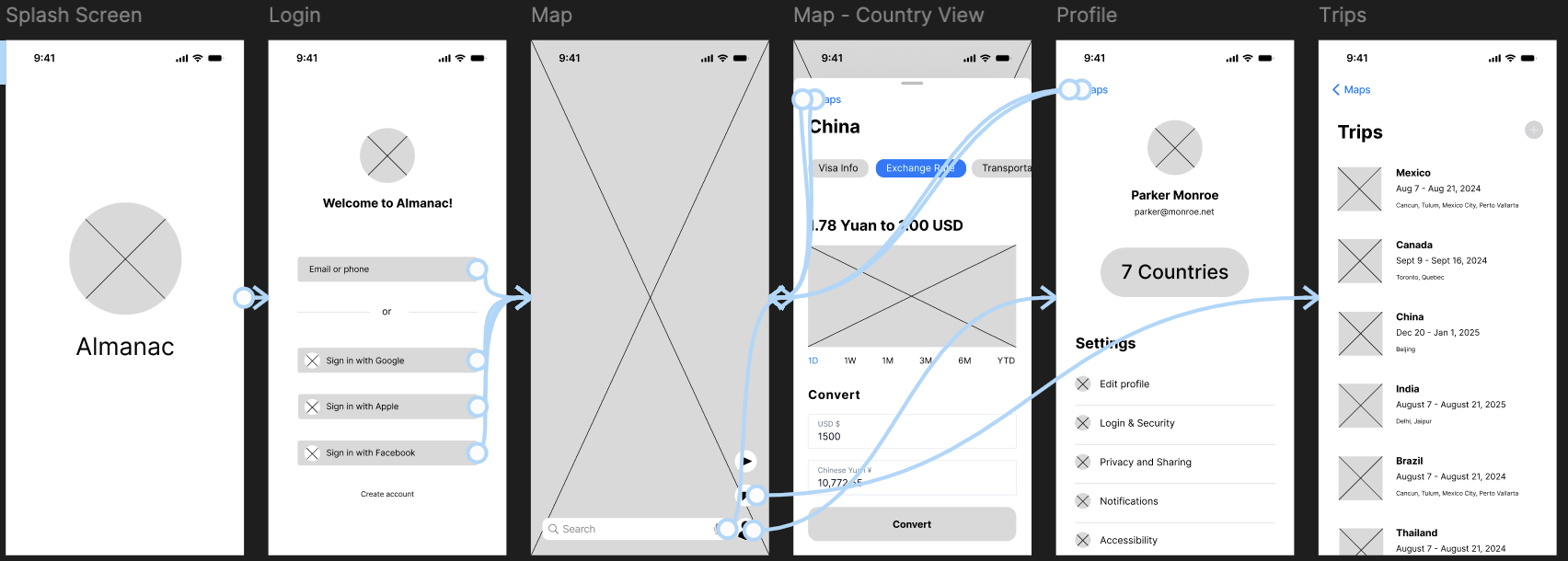

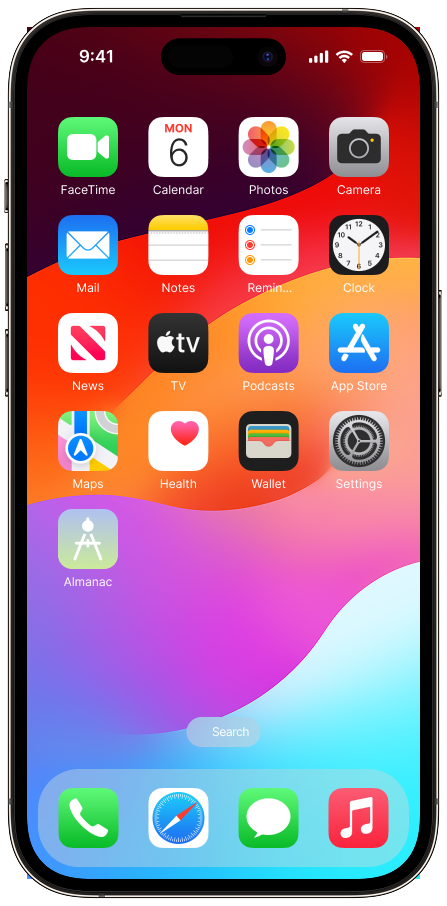
Almanac’s color palette combines soft primary pastels to reflect global diversity while maintaining a calming, grounded tone. The visual language is inspired by vintage navigation tools—anchoring the app in a spirit of exploration. Every element was designed to reduce cognitive load and inspire confidence in users.
The final UI was built around accessibility, clarity, and quick access to high-priority features. From the interactive map to the document vault, each screen supports the goal of making travel less intimidating and more intuitive.
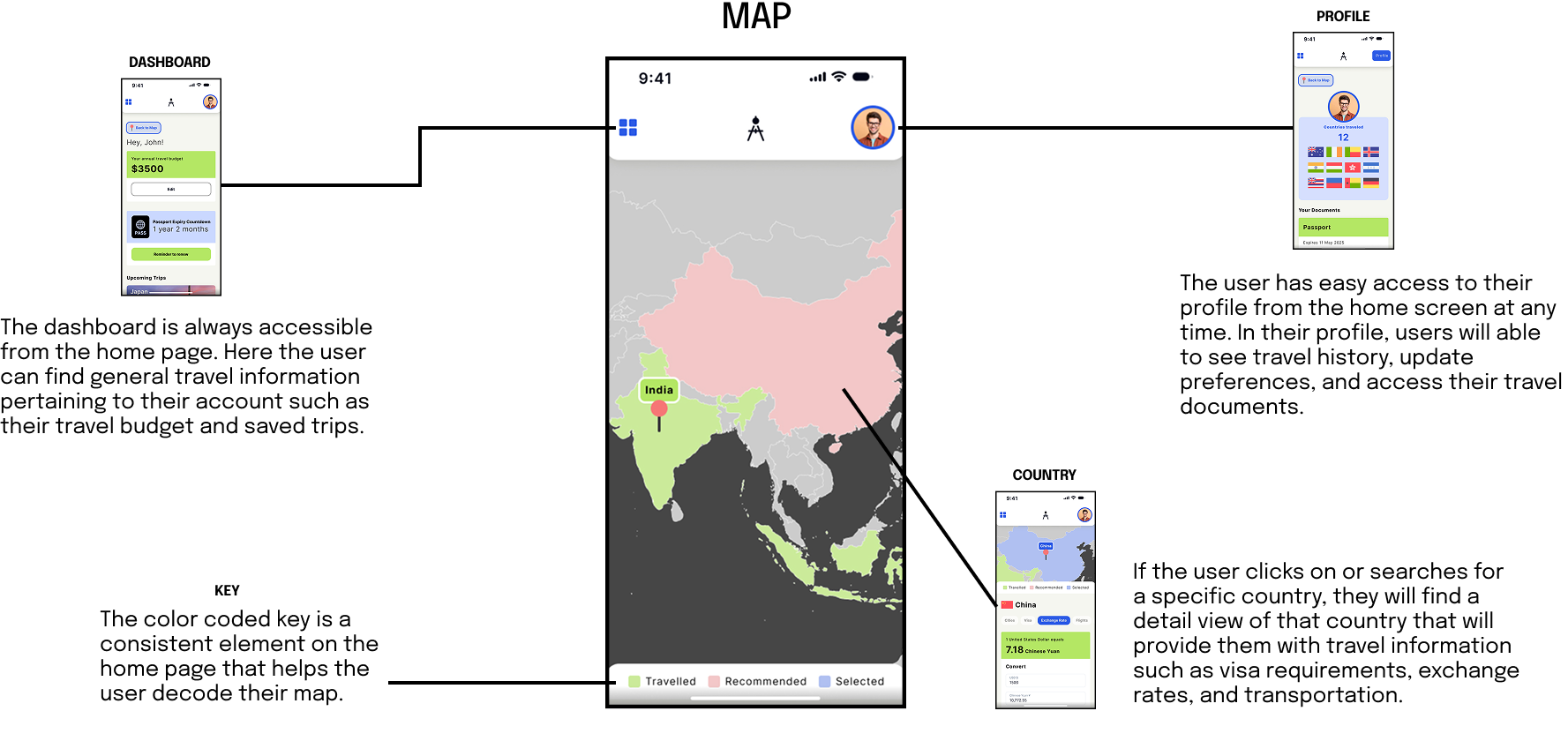
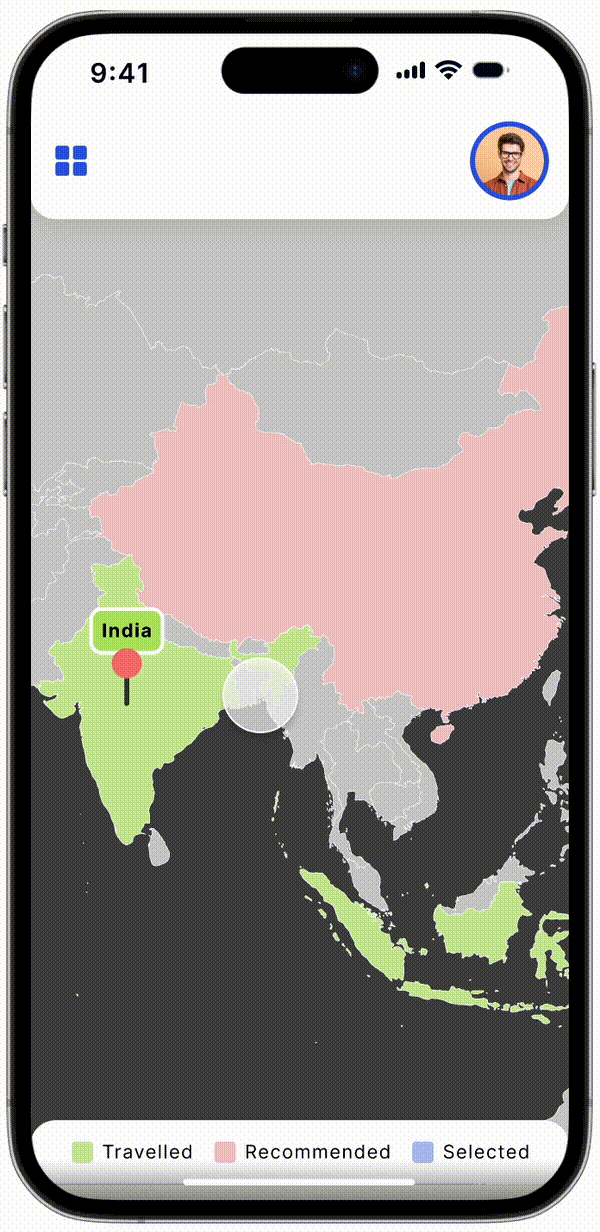
Users can effortlessly access flight and accommodation bookings, tourist attractions, visa and other documentation requirements, currency exchange rates, and safety bulletins from the US Department of State, all from the map's home page.
Users can effortlessly manage their travel plans from a single page within the app. The itinerary dashboard minimizes the need for travel plans across multiple platforms; a specific user pain point expressed during the research phase.
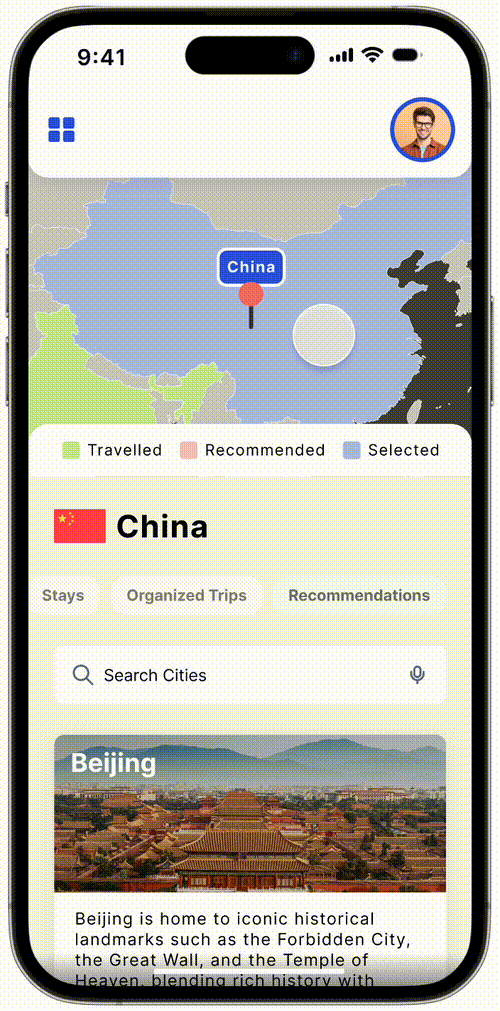
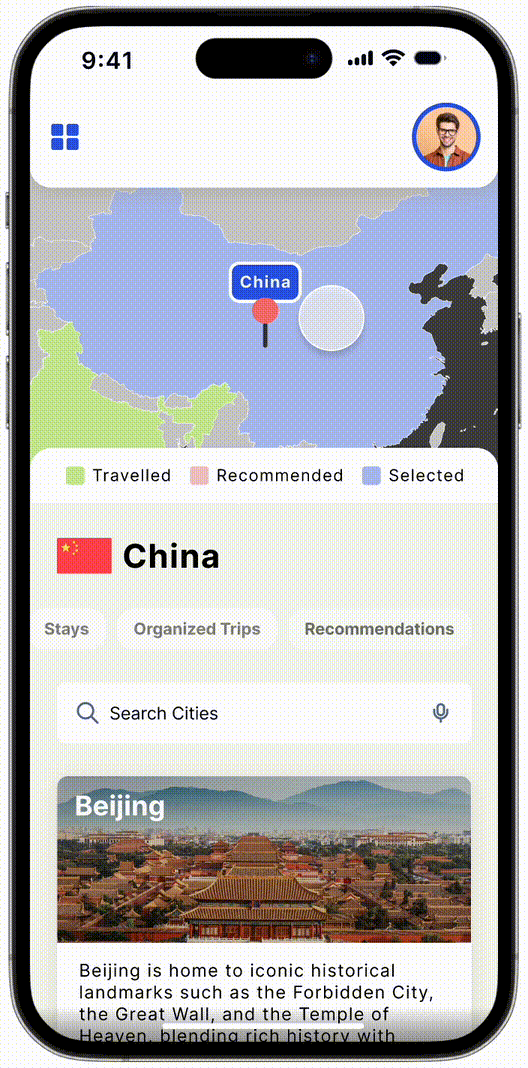
With secure document storage and user specific travel information (like passport renewal reminders) all accessible from a single dashboard page, users can easily keep track of their essential travel documentation and stay up to date. Confidence across borders.